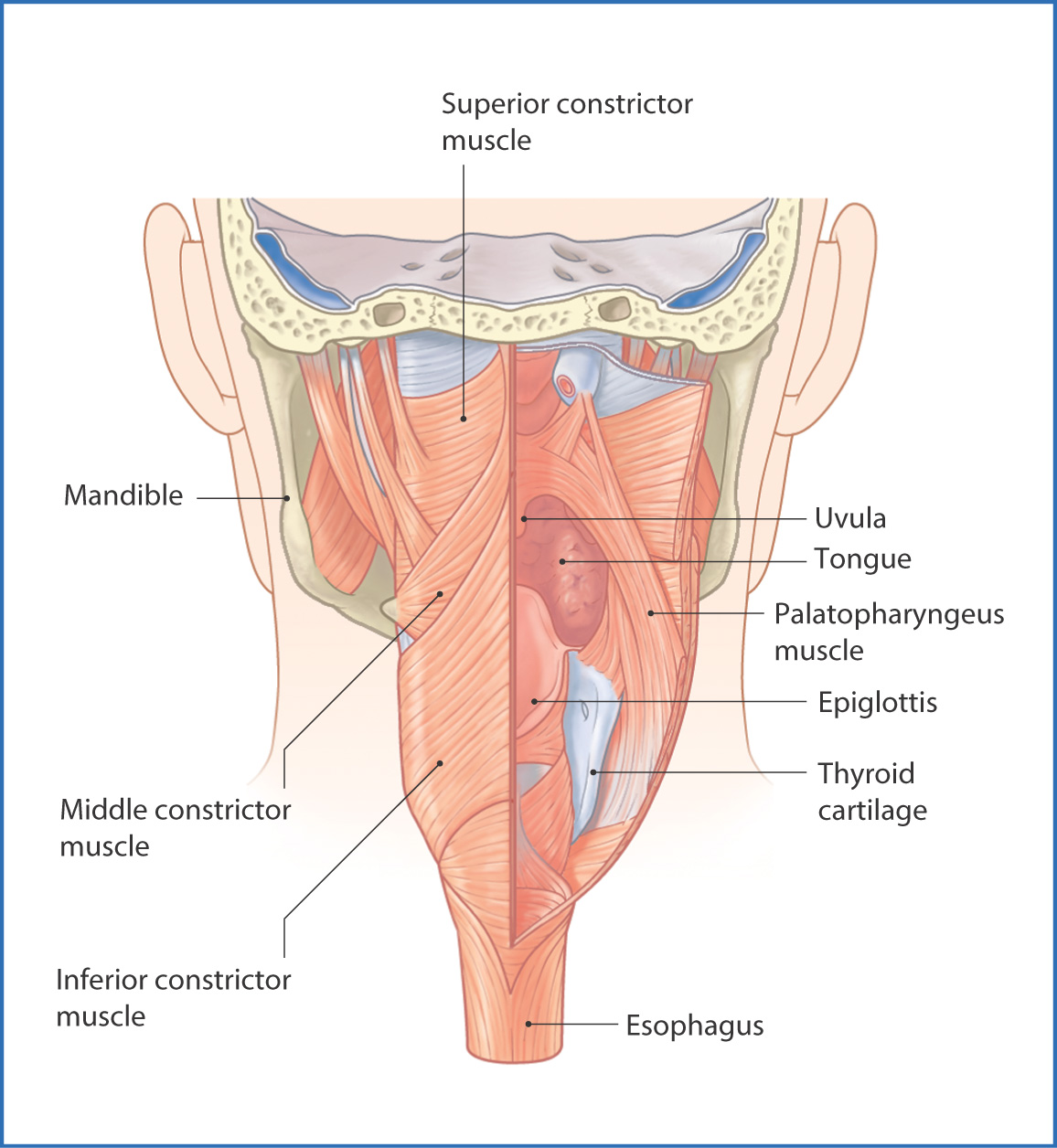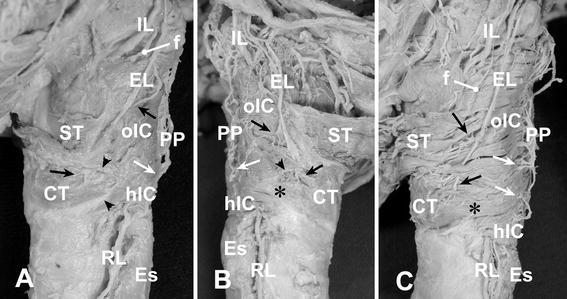
The coordination of the constrictor muscle peristalsis with this opening of the UES also creates a negative pressure to propel the bolus further in the inferior direction. During deglutition, the cricopharyngeus relaxes as the bolus descends through the pharynx to allow passage into the esophagus. In contrast to the constrictor muscles, it maintains a contracted state during resting physiology to maintain the UES and thus helps to prevent pharyngeal reflux of esophageal and gastric contents. The cricopharyngeus muscle attaches to the cricoid cartilage and wraps circumferentially around the pharynx. Due to the finding that some of the inferior ICPM fibers merge with fibers of the cricothyroid muscle, the belief is that the ICPM serves as part of the functional UES. It inserts onto the pharyngeal raphe and constricts sequentially in coordination with the SCPM and MCPM during deglutition to propel the bolus towards the esophagus. The inferior constrictor pharyngeal muscle (ICPM) originates from the cricoid and thyroid cartilages and crosses the cricothyroid muscle. The contraction of these fibers constrict and close the pharynx during deglutition to propel the bolus downward. It fans out to attach along the pharyngeal raphe, but this muscle rarely reaches the top of the pharynx (superiorly) or thyroid cartilage (inferiorly). The middle constrictor pharyngeal muscle (MCPM) originates from the stylohyoid ligament and the greater and lesser horns of the hyoid bone. It inserts onto the pharyngeal raphe and contracts during deglutition to move the soft palate to the posterior pharyngeal wall, thus preventing the bolus from moving upward into the naopharynx. The superior constrictor pharyngeal muscle (SCPM) originates at the lateral base of tongue, medial pterygoid plate, pterygomandibular raphe, pterygoid hamulus, and the posterior end of the mylohyoid line. Caudal to the inferior pharyngeal constrictor muscles, the cricopharyngeus muscle functions as part of the upper esophageal sphincter (UES) and has a close relationship with the three longitudinal muscle pairs. There is a hypothesis that because of their insertion relative to the piriform recess, their contraction may also assist in the clearance of food residue from the pyriform. They function to shorten and elevate the pharynx during deglutition. The longitudinal muscles, palatopharyngeus (PP), stylopharyngeus (STP), and salpingopharyngeus (SLP), merge caudally to become the medial aspect of the lateral wall of the pharynx. Their different attachment points and sequential, involuntary contraction allow the pharyngeal lumen to be closed in a cranial to a caudal direction for peristalsis during swallowing, while alternately remaining open for breathing and speaking.

The three pharyngeal constrictor muscles are delineated by their position relative to one another (superior, middle, and inferior).

The limits of the pharynx extend from the base of the skull superiorly to the cricoid cartilage inferiorly.


 0 kommentar(er)
0 kommentar(er)
